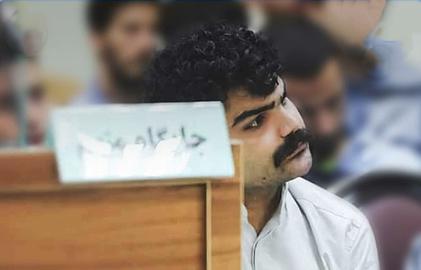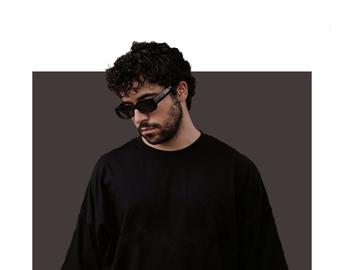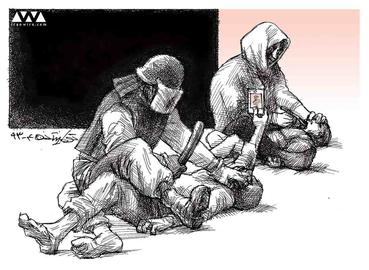More than two decades ago, I failed a religious education class and had to retake the exam. The principal wrote to my parents, asking them to come to school to discuss my performance. A strict routine followed. Each day I had to bring my Koran and my religious studies textbook home and sit with my mother so that she could help me with my studies. As part of my discipline, I had to recite passages from the Koran during the morning assembly each day.
Islam is a central tenet of Iran’s education system, and memories like this—a very common experience in those days—are testament to that. Following the 1979 Islamic Revolution, the government made it a priority to reform the country’s education system, bringing in new textbooks and moving away from what was perceived to be a Western approach to learning.
In 1987, new laws were introduced to make religious values and the founding principle of the Islamic Republic—the “guardianship of the Islamic jurist”—central to every child’s education. Last year, Ayatollah Khamenei spoke out on education in Iran, stating that Iran’s three branches of government must take further steps to “transform the educational system.”
Over the last 30 years, not only has religious education become one of the most important subjects in the classroom, but religion has also become central to the teaching of history, language, social studies and the sciences. For example, a biology textbook will include references to and verses from the Koran alongside explanatory paragraphs about oxygen’s role in the growth of plants.
Saeed Peyvandi, an Iranian-born professor of sociology who now lives in France, tells IranWire that religious education in state schools has increased since the revolution, so that it now comprises 12 percent of all education. Prior to 1979, it was six percent. “This number relates only to religion textbooks and classes and does not take into account religious passages in other textbooks and extracurricular activities,” he says. “If we take these into account, we can say that schools spend about a quarter of their time teaching religion. This is four times the international average.”
In Peyvandi’s opinion, mixing religious and secular education is not a wise move. “In countries like Saudi Arabia and Yemen teaching religion has taken on an extreme form,” he says. In most developed countries, he says, religious education is separate from other kinds of education, not intertwined in the way it has increasingly become in Iran. “Religious education takes place outside school walls, Peyvani says.” A fundamental part of education is the ability to ask questions and engage in debate, so mixing mainstream education with religious teaching is problematic because religious believers may not feel comfortable having aspects of their faith challenged. In secular learning environments, on the other hand, knowledge can be openly “discussed and criticized in a rational manner.”
Peyvandi explains that different countries follow different learning models to address this issue. “In a country such as France, state-run schools do not teach religion because the educational system is not based on religious beliefs and schools are not allowed to take the side of a specific religion. Religion is taught more from historical, philosophical or sociological points of view. In countries like Germany, religious classes are not obligatory.” If pupils study religion, marks for the class are not included in the student’s final grade point average.
The Minority Report
Another problem in Iran is education for people from religious minorities. Anakin is a seventh-grade Armenian student living in a town in Fars province. His father told IranWire that, although Anakin goes to a school that teaches mainstream Shia religion as part of the curriculum, he does not have to attend these classes. At first the school objected, he said, saying that this would be disruptive for other students, who might assume that they don’t have to pay attention to lessons if one of their peers was allowed to opt out of them. But eventually, the school decided that Anakin should attend another class during that hour so it wouldn't appear as if he was receiving special treatment.
But Anakin’s father says that teachers repeatedly talk to Anakin about Islam, despite the fact that he is a practicing Christian. “ I went to his school and pleaded with them not to interfere in our religious affairs. Unfortunately, all textbooks talk about religion and religious questions. They are encouraging my son to convert to Islam.”
A high-level official at the Ministry of Islamic Guidance and Culture recently announced that it was mandatory for prayer bells to be rung at all schools across the country. Schools must dedicate at least 30 minutes a day to prayer. Though the law requiring schools to record the number of students who take part in prayers is not enforced, there is a very real pressure for students to conform to official guidelines, especially when it comes to religion and culture.
As Peyvandi points out, forcing people to study a religion they don’t follow is against international laws protecting freedom of religion. Under Iranian law, students from religious minorities are entitled to choose their own religious classes, but Peyvandi says in reality, this does not always happen. Even if they don’t have to study Shia Islam in religious classes, lessons in history, languages and other subjects now all have a religious component. “Iranian textbooks do their best to give prominence to Islamic and Shia religious identities”, he says.

























comments